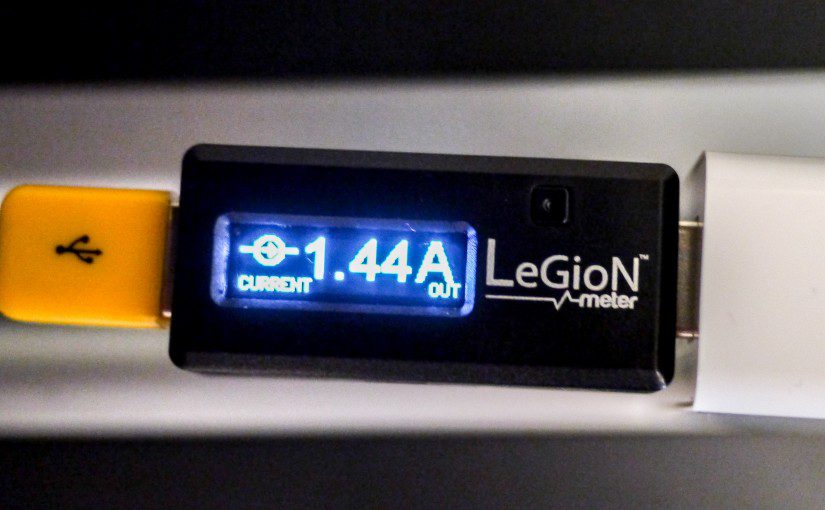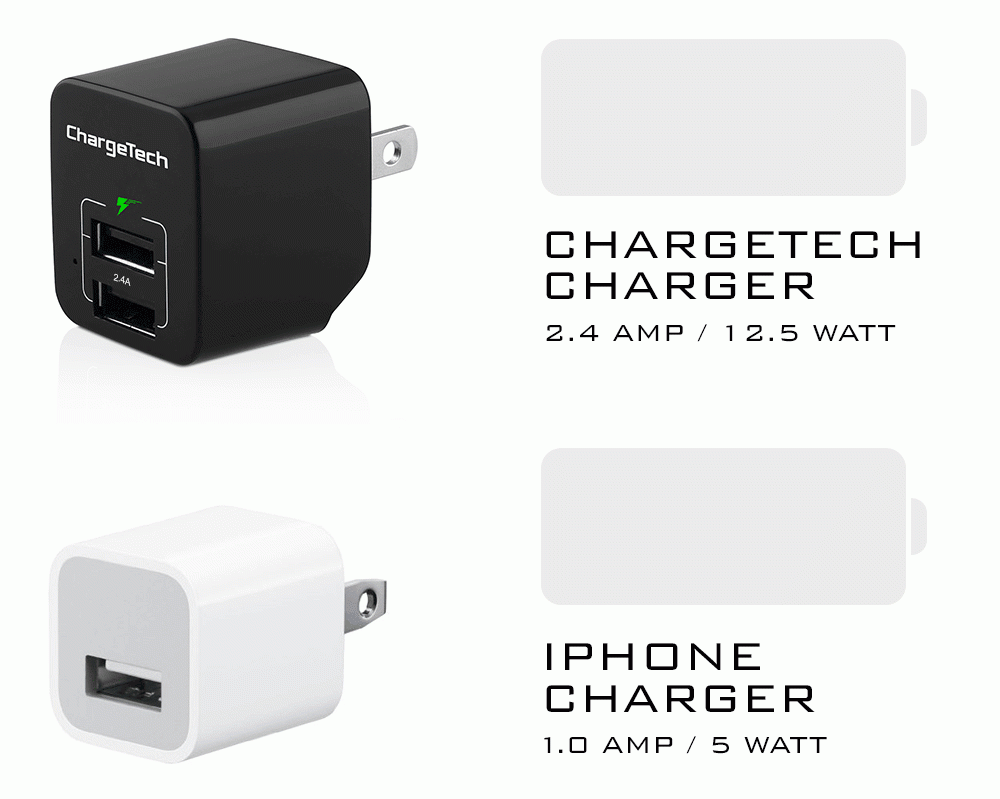Like most average geeks, I assume that when I connect my phone or tablet to a USB power source, it’s going to deliver the level of power it says it will. I don’t know nearly as much about electrical system as some do, so when I saw a crowdfunded gadget called the Legion USB Power Meter, I thought it would be a great tool to help me understand power flow and collect real-world data. So, I dusted off my old tech reviewer’s hat, grabbed a bunch of different USB power sources, and got to work. The goal? To understand if the USB chargers I was using were delivering maximum efficiency and letting me charge my devices as fast as possible.
To test each scenario, I used both an HTC One M9 (with around 50% to 80% battery level in each test), and my iPad Air 2, with around the same battery life. I used an Apple Lightning cable for the iPad, and a microUSB cable a friend sent from Singapore that is supposed to allow for a greater efficiency in power transfer (but that’s a test for another day).
One thing that people often forget: modern devices are smart enough to pull as much power as they can handle. What that means though is that if you connect a phone to a 2.4amp charger, it’s unlikely it’s going to pull the full 2.4 amps. Tablets can cope with more power though and tend to gobble it all down. The power source has to be able to intelligently sense what’s connected to it and deliver the right amount – and not all USB chargers will do that.
Below are the various USB power sources I tested, links to them (where applicable), what level of power they claim to put out, and the actual tested results. In each case I left the device connected for 30-60 seconds, and did a guesstimate on the final number (since it constantly bounced around within a tenth of a point).
The takeaway? Android phones don’t charge very well on ports designed for iOS devices on some chargers, nor iOS devices on Android phone chargers, and you have no way of knowing that unless you’re able to measure it. I used the Rosewell wall charger in my office for months without realizing it was terribly slow at charging my HTC phone. Lastly, some chargers will have iOS ports, Android ports, and “other”, basically forcing you to think far too much about what plugs into where. I’m not a fan of those types of chargers.
The ChargeTech charger is the best I’ve seen: super small, dual ports, kicks out great power, and is great for travel because of the folding prongs and angled body corner. Anker chargers are also very solid and I’d buy them again. Apple chargers surprised me by being platform agnostic. Who’d have thought that would be the case?
Below is my list in terms of best to worst chargers, coming from the perspective of a household with Android phones and iOS tablets (plus one Fire HD 7).
- CLAIMED: 2.4 amps
- ACTUAL w/HTC M9: 1.48 amps
- ACTUAL w/iPad Air 2: 2.35 amps
Anker 40 watt 5 port Turbo USB Adapter
- CLAIMED: 2.4 amps
- ACTUAL w/HTC M9: 1.47 amps
- ACTUAL w/iPad Air 2: 2.3 amps
- CLAIMED: 2.4 amps
- ACTUAL w/HTC M9: 1.5 amps
- ACTUAL w/iPad Air 2: 2.4 amps
- CLAIMED: 4 amp
- UNIVERSAL PORTS 1 & 2 ACTUAL w/HTC M9: 1.46 amps
- UNIVERSAL PORTS 1 & 2 w/iPad Air 2: 0.93 amps
- PORT 2 UNIVERSAL ACTUAL: 1.46 amps (0.93 amps with iPad Air 2)
- PORT 3 iDEVICE ACTUAL w/HTC M9: 0.45 amps
- PORT 3 iDEVICE ACTUAL w/iPad Air 2: 1.97 amps
- PORT 4 SAMSUNG ACTUAL w/HTC M9: 1.45 amps
- PORT 4 SAMSUNG ACTUAL w/iPad Air 2: 0.45 amps
Motorola X USB Charger:
- CLAIMED: 1.1 amps (1150 mAH is on the label)
- ACTUAL w/HTC M9: 1.25 amps
- ACTUAL w/iPad Air 2: 0.95 amps
HTC High-Power Charger that comes with newer phones:
- CLAIMED: 2.1 amps
- ACTUAL w/HTC M9: 1.45 amps
- ACTUAL w/iPad Air 2: 0.95 amps
Powergen Dual USB 15W AC Adapter
- CLAIMED: 3.1 amps
- ACTUAL w/HTC M9 on Non-Apple Port: 1.45 amps
- ACTUAL w/iPad Air 2 on Apple Port: 2 amps
- Side note: plugging in both an iPad Air 2 and an HTC M9 effectively “crashed” the charger – it would power both, then cut power, then power them, etc.
Rosewell Wall Splitter with 2.1 amp USB ports
- CLAIMED: 2.1 amps
- ACTUAL w/HTC M9: 0.43 amps
- ACTUAL w/iPad Air 2: 2 amps
Interested in which phones charge the fastest? Tom’s Hardware has a good article on the subject, though the missed the opportunity to discover which phones charge the fastest given the same power source. Maybe that’s a follow-up article…

